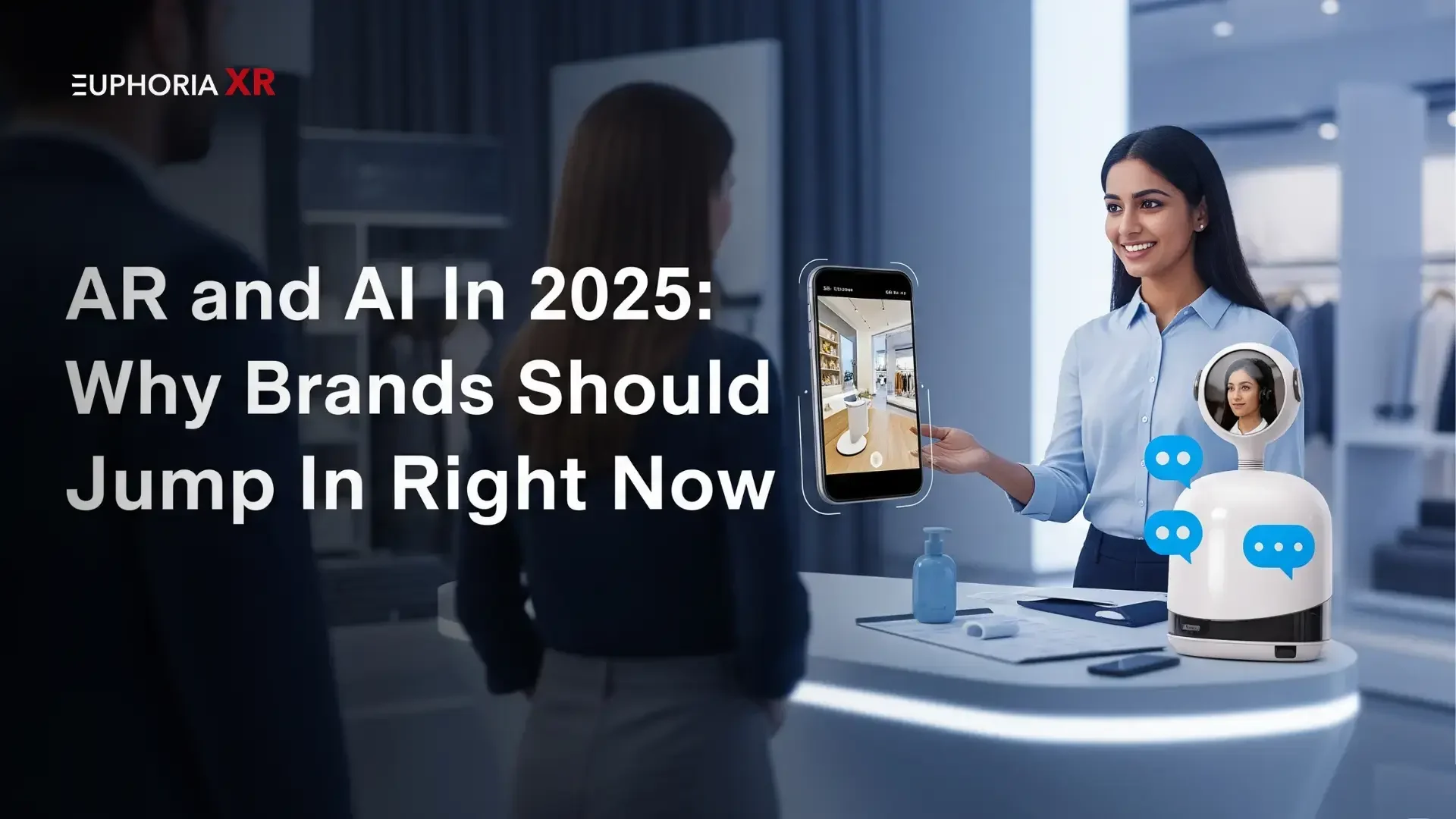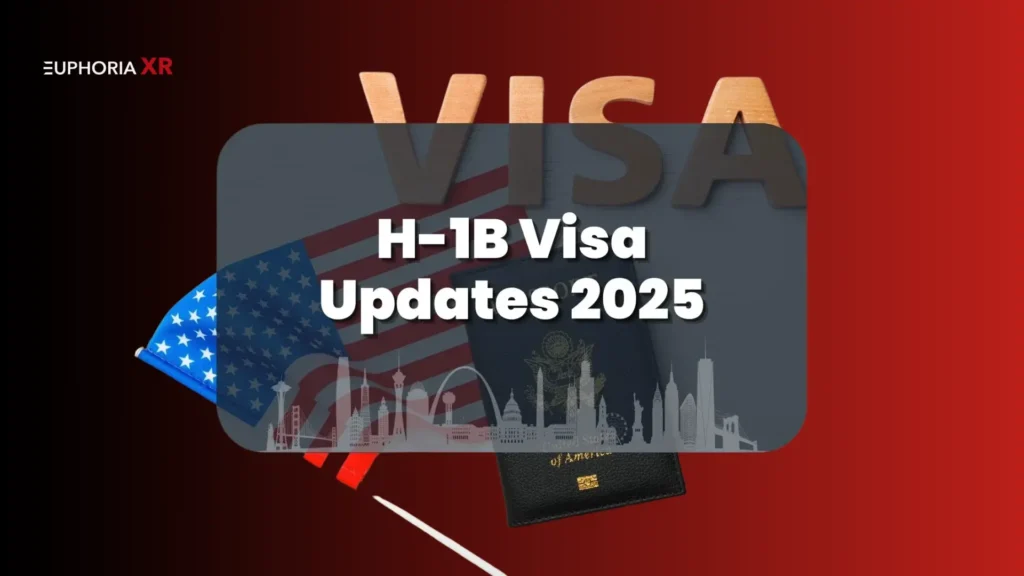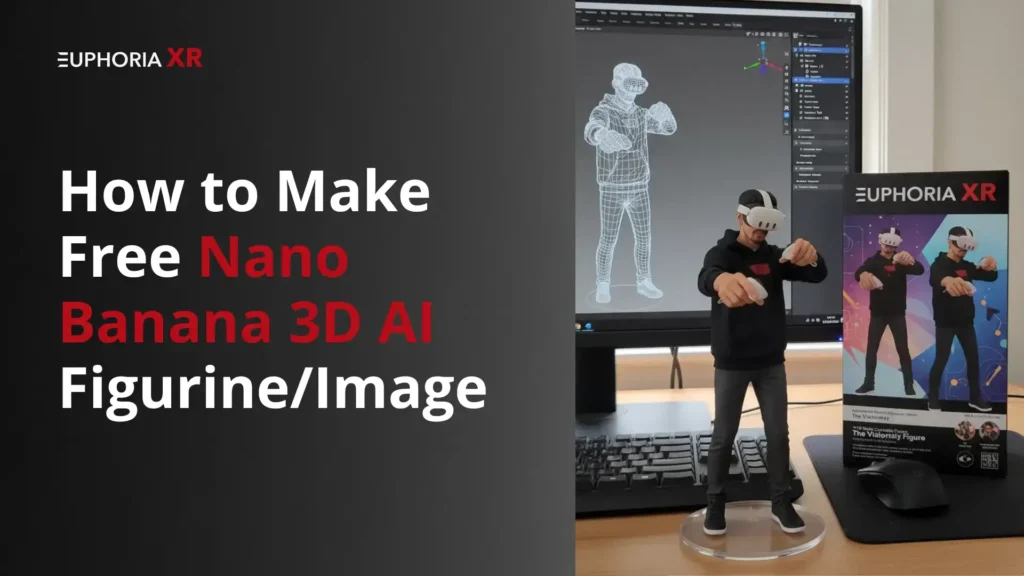“Remember that not so long ago, it was optional that you had a presence on the web? So, sit back and think what it would be like to neglect AR and AI in 2025.”
At the beginning of the 2000s, companies that failed to create a website became outdated very quickly. In 2025, the same is happening, however, with AR and AI.
It is not only AR and AI that are tech trends. They are the new benchmark of how companies reach customers, personalize them, and remain competitive. Waiting on the sidelines not only makes you late, but also costs you even ground.
Since AR and AI in 2025 are not only about early adoption. They are survivalist.
Why the actual question is: Can your brand evolve or become obsolete?
3 Urgent Reasons to Explore AR and AI in 2025
Consumer Expectations Have Shifted
By 2025, your customers do not want to only view your product; they want to feel it. As consumers, people want brands to be interactive and smart, whether it is getting a personalized skincare recommendation with the help of AI or even virtually trying shoes on with the use of AR.
Deloitte states that 3 out of every 4 consumers state that they will spend more at a brand that provides an AR experience. And McKinsey says the conversion rate of sales can be raised by up to 20 per cent by using AI personalisation.
What this implies: In case your brand continues to depend on static content or nonspecific messages, it will seem outdated quickly. AR and AI enable you to rise to emerging expectations.
Competitive Advantage is Shrinking
IKEA allows AR to help people drop furniture in their homes and understand how it looks, while big-name brands are already doing it. L’Oréal created an artificial intelligence-based skin analysis tool. Even small firms are applying AI to compose a description of the products and AR to preview a custom design.
AR and AI 2025 are not the cool add-ons anymore. And they are how intelligent brands make people trust them, engage them, and reduce the buyer journey.
Missing out at the moment is equal to catching up at a later time.
Tech Accessibility is At its Peak
The positive thing is that you do not need a group of developers or six figures to start. Using AR tools such as 8thWall, Zappar, ChatGPT plugins, and HeyGen, an AI-powered campaign can be up and running within days, not months.
Even better? The majority of these tools have a drag-and-drop interface or easy plug-ins, which implies that marketing teams are now free to develop prototypes without encountering technical bottlenecks.
The Changing Brand–Consumer Relationship in 2025
Passive Viewing → Active participation
Those days are over when people used to relax and observe advertisements. The visual element of AR makes it possible to put your product in the space of the user on his or her terms.
Static Ads → Immersive Brand Experiences
AR and AI do not present a message; instead, they offer customers a chance to be part of your brand story. Just imagine virtual storefronts, interactive tutorials, AI quizzes, etc. These are supposed to engage, not to interrupt.
One-Size Messaging → AI-Driven Personalization
The generic messaging is dead. AI assists brands to provide product recommendations, emails, and content that gets adapted in real time, in terms of behavior, preferences, and even tone of voice.
Salesforce estimates that 76 percent of customers want the companies to know their needs. That is not only achievable with the help of AR and AI in 2025, but it is also the standard.
Our customized AI development services are intended to improve engagement, streamline business processes, and produce quantifiable outcomes.
AI as the New Creative Engine
People have feared the possibility of AI taking over creators over the years. However, in 2025, the situation is not the same: AI allows creators to do their best, quicker, with more intelligence, and more impact.
This is how brands are using AI as their creative co-pilot:
Generative Storytelling
Product descriptions, wayfaring brand stories, video scripts, and blog posts are being generated with AI tools such as ChatGPT, Jasper, and Copy.ai, catering to each audience segment. Brands do not engage in the guessing game; instead, they experiment and iterate as they go.
Smart Product Recommendations
AI uses browsing history, behavior, and preference to offer the correct product at the correct time. This is good not only in sales but good in customer satisfaction. AI recommendations made by Amazon lead to 35 percent of the company’s revenue (McKinsey, 2023).
AR Filter Generation
The capability of putting AR and AI together enables brands to make engaging and dynamic branded filters, which can be automatically changed according to their behavior or preference. Consider virtual makeup trials, home design previews, or even touch packaging.
Predictive Targeting
AI predicts the future moves of your customer. It divides your prospects into groups, rates leads, and tells when you should contact them next. The result? Better interaction, less guessing.
Are you prepared to take the lead in the AR and AI era? Collaborate with an Augmented Reality Development Company that is adept at both execution and creativity.
How to Test an AR & AI Concept in 7 Days
You do not require a heavy budget or a technology department to begin. This is a basic 7-day plan to prove your initial idea:
Day 1–2: Define a Small Use Case
Identify one of your funnel areas or experiences to improve.
Examples:
- Augmented try-on of a single product
- Unique quiz containing the results made with AI
- AR filter of a social campaign
Days 3–4: Build using no-code tools
Use such tools as:
- Zappar or 8thWall (AR)
- HeyGen, ChatGPT, or ManyChat (in case of AI)
You are not obliged to code; all that is needed is drag and drop and test.
Day 5: Launch to a small audience
Use your email list, Instagram followers, or a Facebook ad group. Make it small to allow you to derive feedback within a short period.
Day 6: Analyze engagement
Look at:
- Interaction time
- CTO or swipe-up rates
- Conversion rate/ completion rates
Day 7: Refine or scale
When it did work-make a larger one.
And by the way, even if it didn’t get successful, adjust the flow or message, or images, and go make it work again.
In either case, you are getting exposed to what functions in the world of AR and AI will be in 2025.
We create everything, from AI personalization to AR filters. Partner with a forward-thinking AR development company that provides full-spectrum AI development services.
Bottom Line: The 2025 Window Won’t Stay Open Forever
AR and AI in 2025 can no longer be described as a nice-to-have trend. They are redefining the way individuals deal with brands. Avoid waiting to see one of the various tech pieces settle or waiting until the competitors figure it out first: it will only result in you being late.
Begin by getting a basic one. Learn fast. Develop credibility based on experience, not advertisements.
The reason is that in 2025, it is the brands that experiment that will win.















